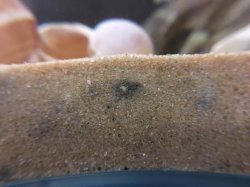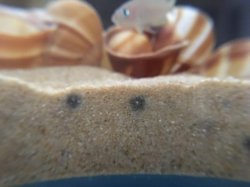Krishna Kumar
New Member
- Joined
- Aug 2, 2019
- Messages
- 13
- Reaction score
- 2
Hello all, here is a small update on my Multi's tank. I used the media of the tank there were quarantined, & the media of one my oldest matured tank to cycle. I released a fish y'day afternoon along with 4 liters of the water from their quarantined tank & by the look of it they are doing fine.
I have few question, they are still very skittish & when I try to drop their food they just get into their shells, dropped a couple of pellets but they never seems to eat which is on the bottom & I had to remove the uneaten food. However today morning I tried feeding them and they do feed on the pellets but not completely. Any solutions ??
Secondly kindly see the pic attached I see in the same these green/black patches, I presume this algae formed in the air pockets of the sand or am I wrong ??
Any suggestion/solutions.
https://drive.google.com/open?id=1oR_lLOe5DrRqmTIDMjQGRB-680Kjofrl
I have few question, they are still very skittish & when I try to drop their food they just get into their shells, dropped a couple of pellets but they never seems to eat which is on the bottom & I had to remove the uneaten food. However today morning I tried feeding them and they do feed on the pellets but not completely. Any solutions ??
Secondly kindly see the pic attached I see in the same these green/black patches, I presume this algae formed in the air pockets of the sand or am I wrong ??
Any suggestion/solutions.
https://drive.google.com/open?id=1oR_lLOe5DrRqmTIDMjQGRB-680Kjofrl
Attachments
Last edited:





